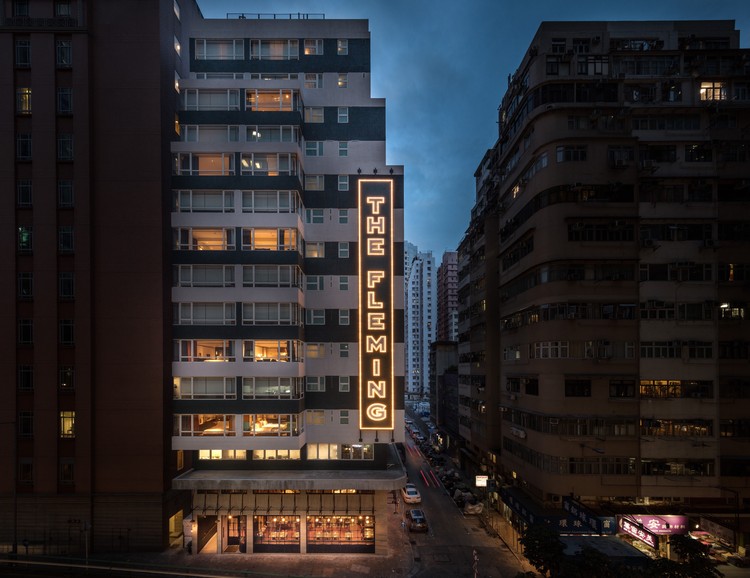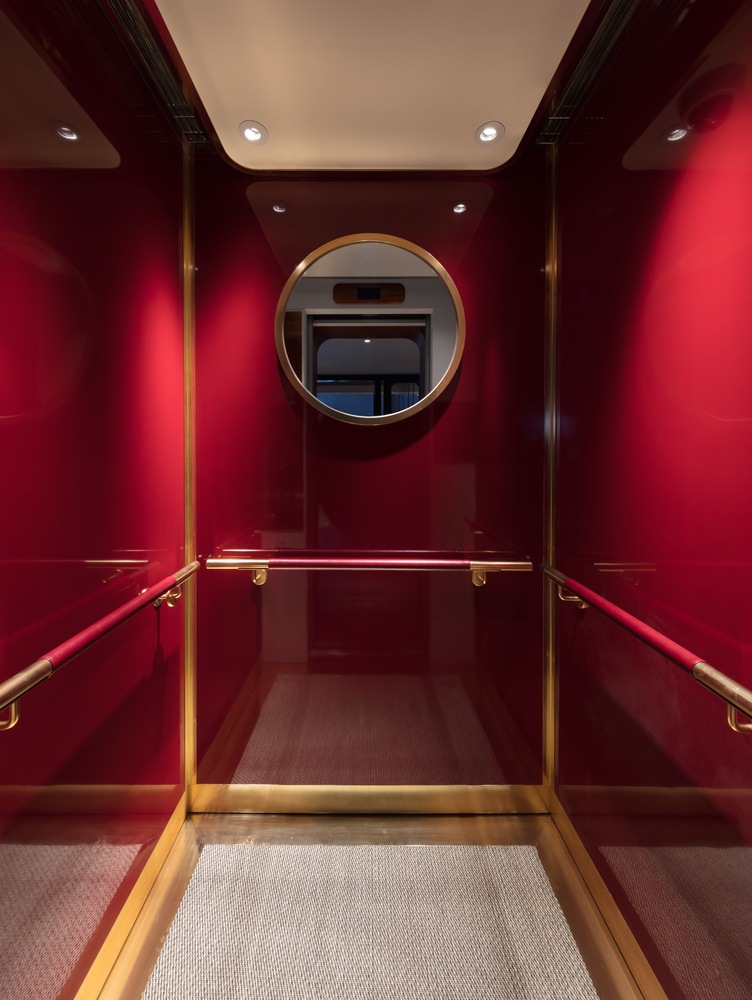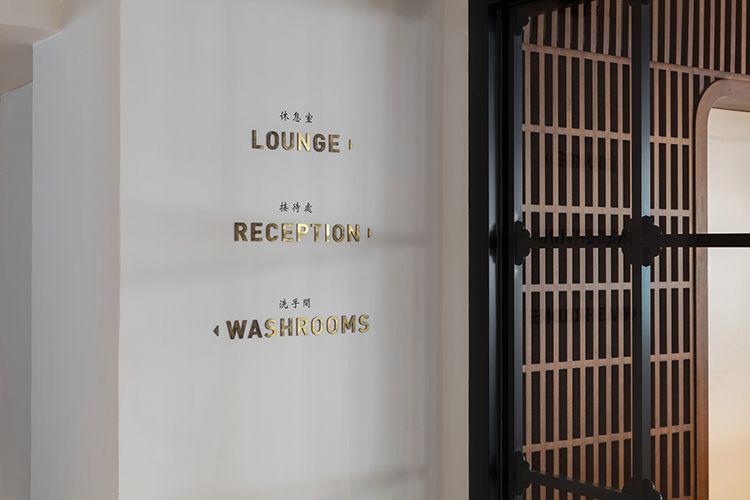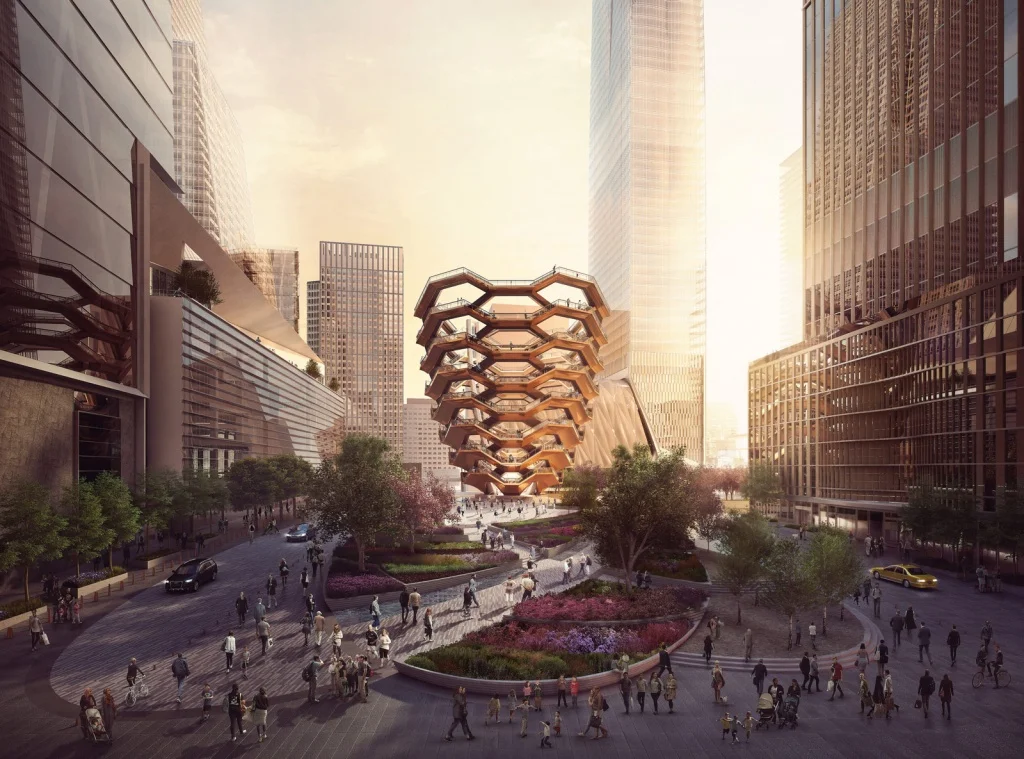The Fleming in Hong Kong
The Fleming, Hong Kong,
Design project by Maxime Dautresme of A Work of Substance
A Work of Substance was tasked to redesign and rebrand The Fleming Hotel, originally opened in 2006. A new take on the architecture, interior, products, and identity transformed The Fleming into a 66-room boutique hotel that is a true reflection of Hong Kong.
Occupying a building from the 70s’, the hotel stands in Wan Chai close to Victoria Harbour front. The multilayered design concept draws inspiration from the location and history, leveraging Hong Kong’s maritime heritage and 70s’ industrial era to create a cultural, social and efficient character.
Ferry, a unique and elegant icon of Hong Kong’s past and present, became the foundation for every design detail, including the custom designed furniture and lighting. Nostalgia is further evoked by colours and scents: Carmine reds and bottle greens — hues seen on the hull of Hong Kong’s ferries, fishing boats, delivery trucks, and temples —and apothecary-inspired toiletries and custom aroma of sandalwood and amber notes, to deliver an authentic sense of place.
Our creative strategy was informed by an in-depth research process on international and local hospitality landscape and The Fleming’s clientele — business travellers. We found that in particular future business travellers expect increasing emotional experience with art and culture, as opposed to traditionally commercial trade-focused.
Architects : A Work of Substance
Location : 41 Fleming Road, Wan Chai, Hong Kong
Category : Interior Design
Architect in Charge : Maxime Dautresme
Client : John Hui
Contractor : IBI Ltd
Area : 3382.0 m2
Project Year : 2017
Photographs : Dennis Lo
Manufacturers : Bolon, MIDDLE EARTH
Elevators are an essential component of modern buildings and designing an elevator cab interior involves a combination of functionality, safety, and aesthetics. From defining the purpose of the elevator to choosing materials and colors, lighting, adding safety features, wayfinding, branding, and considering the overall aesthetic. It's important to test and evaluate the design, regular maintenance and attention to details.
Heatherwick Studio’s new ultra-luxury residence in the heart of Singapore's Admore Draycotta Area is a tranquil vertical palace of natural beauty. With an abundance of sensuous spaces, the building blossoms out of the city into a soaring vertical landscape.
Architects and designers wanted to create a modern style better suited for the modern mechanical and industrial age marking. Art Deco celebrated movement and motion developed from what people saw as the aesthetics of the machine age. It was sleek and sophisticated, featuring smooth surfaces and bold colours in high contrasts like black and white.
Since its founding in 1831, Nihonbashi Takashimaya has been a people-centered department store that enhanced customers’ expectations on service and hospitality while closely mastering traditional manners and customs.
The State of Illinois Center, one of America’s most debated public buildings has inspired and outraged citizens and critics since its opening in 1985. Designed by architect Helmut Jahnan, the James R. Thompson Center was completed almost only 35 years ago is in threat of being destroyed.
Expo 2010 was held in Shanghai, China. The international event gave counties and corporations a stage to showcase their unique culture, identity and technology alongside local industry and innovation. The Finnish elevator behemoth Kone designed a three story glass shaft and complimentary elevator cab that shuttled people through the vertical landscape.
The Solomon R. Guggenheim Museum, often referred to as The Guggenheim, is an art museum designed by Frank Lloyd Wright. One of the most iconic buildings of the 20th century, was also one of his last. A reinforced concrete spiral unlike anything the world had seen secured Wright as the worlds greatest architect, but this masterpiece is missing one distinguishing detail that would have changed everything.
Built on the very edge of a cliff overlooking the a 76m (250ft) drop, overlooking the surrounding city, the 611 room 80-metre-tall (260 ft) was the tallest buildings in the entire province of Quebec. To shuttle passengers and their luggage through the 18 storey building monolith, architects installed three gated manually operated elevators in the main lobby. More were added during two major expansions to the hotel, one in 1908–09, and another in 1920–24.
Nicknamed “The Vessel,” the dynamic structure that has captured the attention of media, designers, critics, as well as visiting and resident selfie hunters alike rose out of the multi-billion dollar Hudsons Yards development in New York in early 2019. At 150ft (45 metres), stairs climb up in every direction providing the public a one of a kind vertical climb unlike anything constructed before.

















Le Dokhan's, Paris Arc de Triomphe is a luxury hotel located close to the iconic Arc de Triomphe. Guest rooms, restaurant, bar, fitness center and exceptional service are offered but what makes this hotel truly unique is its elevator cab, made from a vintage Louis Vuitton steamer trunk, adding luxury and nostalgia to guest experience. Perfect choice for luxury travelers visiting Paris.